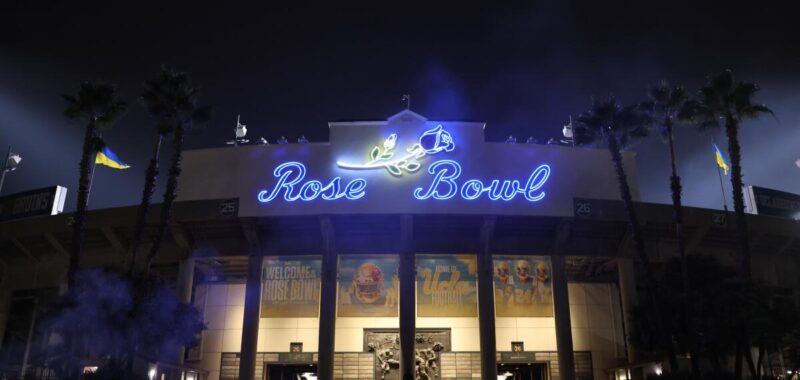
An artist rendering shows how reconfigured seating would be a contiguous oval shape and have a more gradual slope.
(Rose Bowl Legacy Foundation)
The Rose Bowl is a National Historic Landmark, and maintaining that status is paramount to people associated with the stadium and Pasadena preservationists. Among the signature elements essential to the design are the contiguous oval shape and the gradual slope — also known as the rake — of the seating.
There’s logic behind the symmetry of the Rose Bowl. Organizers of the New Year’s Day game wanted to make sure there were no home and visiting teams. Everyone receives the same treatment, has identical locker rooms, etc. So preserving that contiguous shape — as opposed to, say, the asymmetry of SoFi Stadium or the Intuit Dome — took on a different importance.
Then there’s the low-slung look of the seating, unlike the vertical prominence of modern stadiums. There are no obstructed-view seats in the Rose Bowl, and the suites and club seats are the farthest from the field, in the Terry Donahue Pavilion.
Phase 2 of the Lasting Legacy Campaign includes resizing and improving the stadium seating, something that isn’t scheduled until 2029 at earliest. Instead of clawing into the existing historic concrete, the plan calls for putting a material on top of that concrete, a protective overlay, and building new seating on top of that.
Spectators will have 4 to 6 inches more legroom, and the sections will contain about half as many seats from one side to the other.
“That will be a huge change,” said Jens Weiden, Rose Bowl chief executive. “Because some of our sections are 60 seats wide. If you sit in the middle, you have close to 30 people to your left and right that you have to pass over when you leave your seat. That’s saying, ‘Excuse me. Sorry. Excuse me,’ about 30 times.”
Instead of 77 rows from the bottom to the base of the pavilion, the new design will feature about 50 rows. That will reduce the capacity from about 90,000 to 70,000.
“Building stadiums that accommodate more than 70,000 people doesn’t happen anymore because when you get over 70,000, the experience just goes down for everybody,” Weiden said. “It doesn’t just go down for that extra 20,000, it goes down for everybody because now you have to get that many people into parking lots, into restrooms on concourses, everything.”
The plan calls for a variety of seat types, from molded plastic ones to thickly padded club seats.

